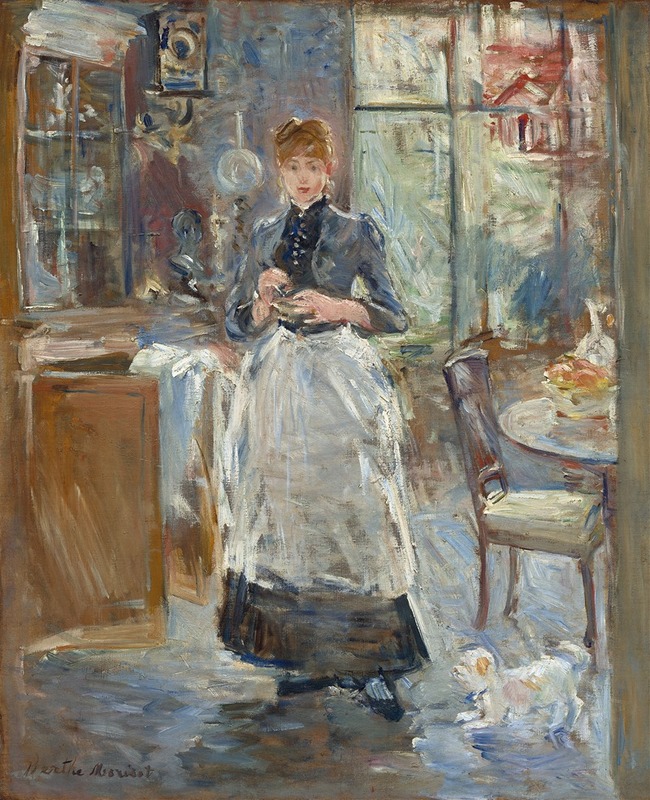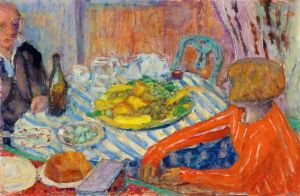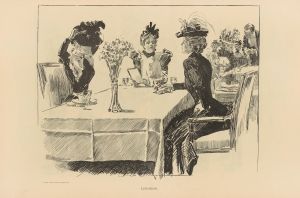
In the Dining Room
A hand-painted replica of Berthe Morisot’s masterpiece In the Dining Room, meticulously crafted by professional artists to capture the true essence of the original. Each piece is created with museum-quality canvas and rare mineral pigments, carefully painted by experienced artists with delicate brushstrokes and rich, layered colors to perfectly recreate the texture of the original artwork. Unlike machine-printed reproductions, this hand-painted version brings the painting to life, infused with the artist’s emotions and skill in every stroke. Whether for personal collection or home decoration, it instantly elevates the artistic atmosphere of any space.
"In the Dining Room" is a painting by the renowned French Impressionist artist Berthe Morisot, completed in 1886. Morisot, one of the few prominent female figures in the predominantly male Impressionist movement, is celebrated for her innovative use of color and light, as well as her focus on domestic life and intimate scenes.
This particular painting, "In the Dining Room," exemplifies Morisot's ability to capture the subtleties of everyday life with a delicate yet dynamic touch. The artwork depicts a serene domestic scene, likely set in a bourgeois household, which was a common subject in Morisot's oeuvre. The composition centers around a woman, who is believed to be a member of Morisot's family or a close acquaintance, engaged in a quiet moment within the dining room. The setting is intimate, providing a glimpse into the private sphere that Morisot often explored in her work.
Morisot's technique in this painting is characteristic of the Impressionist style, with loose brushstrokes and a focus on the effects of light. She skillfully uses a palette of soft, muted colors to create a harmonious atmosphere, capturing the play of natural light as it filters through the room. The light not only illuminates the figure but also highlights the textures and details of the dining room, such as the tablecloth, the furniture, and the objects on the table.
The painting reflects Morisot's interest in the themes of femininity and domesticity, which were central to her artistic vision. Unlike many of her male contemporaries, who often depicted public scenes and landscapes, Morisot frequently chose to portray the private lives of women, offering a unique perspective on the social dynamics of her time. Her work provides valuable insights into the roles and experiences of women in the late 19th century, challenging traditional representations and asserting the significance of women's perspectives in art.
"In the Dining Room" is also notable for its compositional balance and the way Morisot directs the viewer's attention. The arrangement of elements within the painting guides the eye around the scene, creating a sense of movement and engagement. This dynamic quality is a hallmark of Morisot's style, demonstrating her ability to infuse static domestic scenes with life and energy.
Berthe Morisot's contributions to the Impressionist movement were significant, and her works continue to be celebrated for their sensitivity and innovation. "In the Dining Room" is a testament to her skill as a painter and her commitment to exploring the nuances of everyday life. The painting is housed in the National Gallery of Art in Washington, D.C., where it remains an important part of the collection, offering viewers a glimpse into the world of one of Impressionism's pioneering artists.


















